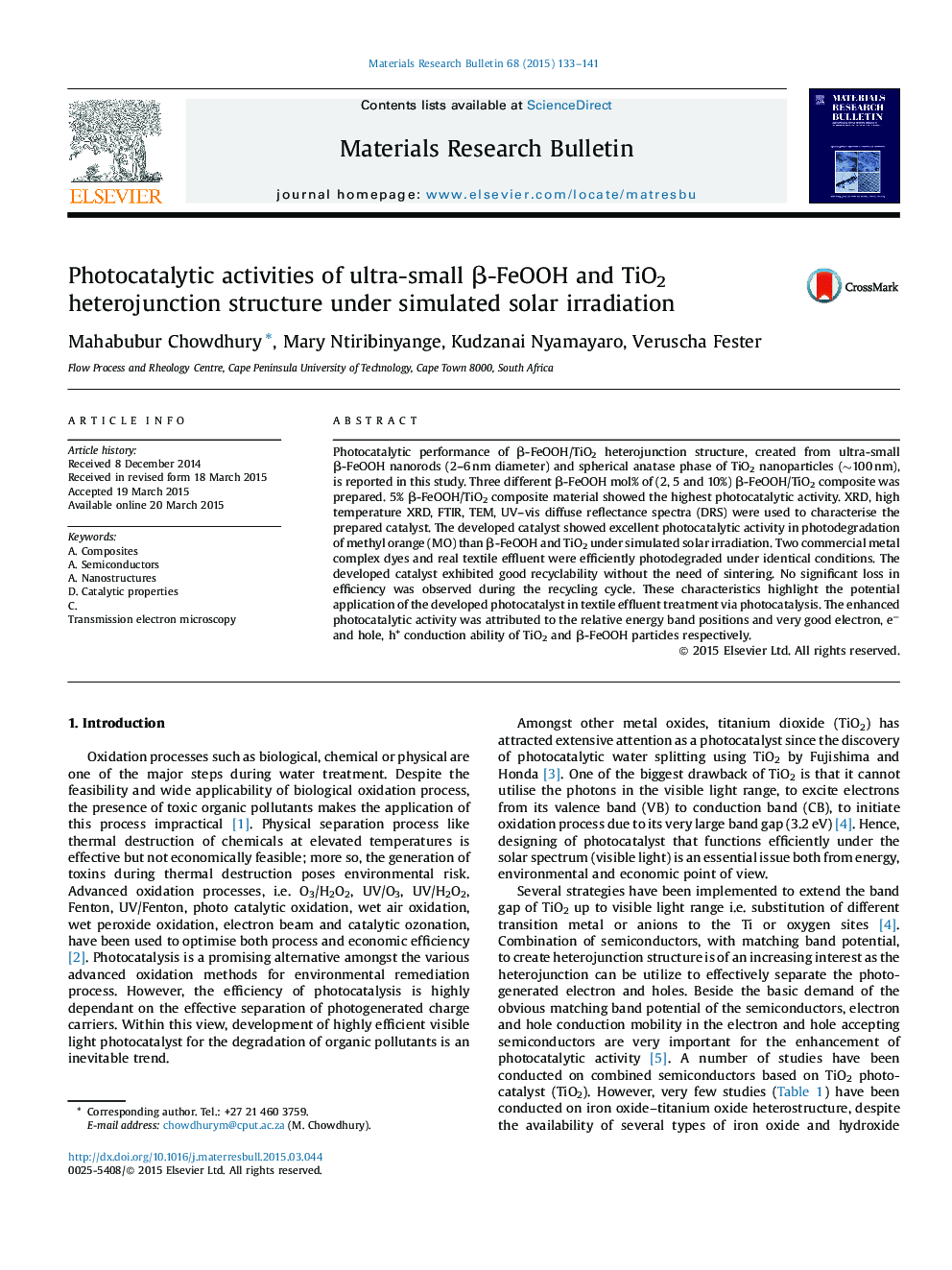| Article ID | Journal | Published Year | Pages | File Type |
|---|---|---|---|---|
| 1487734 | Materials Research Bulletin | 2015 | 9 Pages |
•Ultra small β-FeOOH with TiO2 in heterojunction showed good photocatalytic activity under simulated solar irradiation.•Significant improvement of photocatalytic activity compared to pristine TiO2.•The as prepared catalyst decoloured industrial textile effluent within 30 min.
Photocatalytic performance of β-FeOOH/TiO2 heterojunction structure, created from ultra-small β-FeOOH nanorods (2–6 nm diameter) and spherical anatase phase of TiO2 nanoparticles (∼100 nm), is reported in this study. Three different β-FeOOH mol% of (2, 5 and 10%) β-FeOOH/TiO2 composite was prepared. 5% β-FeOOH/TiO2 composite material showed the highest photocatalytic activity. XRD, high temperature XRD, FTIR, TEM, UV–vis diffuse reflectance spectra (DRS) were used to characterise the prepared catalyst. The developed catalyst showed excellent photocatalytic activity in photodegradation of methyl orange (MO) than β-FeOOH and TiO2 under simulated solar irradiation. Two commercial metal complex dyes and real textile effluent were efficiently photodegraded under identical conditions. The developed catalyst exhibited good recyclability without the need of sintering. No significant loss in efficiency was observed during the recycling cycle. These characteristics highlight the potential application of the developed photocatalyst in textile effluent treatment via photocatalysis. The enhanced photocatalytic activity was attributed to the relative energy band positions and very good electron, e− and hole, h+ conduction ability of TiO2 and β-FeOOH particles respectively.
Graphical abstractFigure optionsDownload full-size imageDownload as PowerPoint slide
